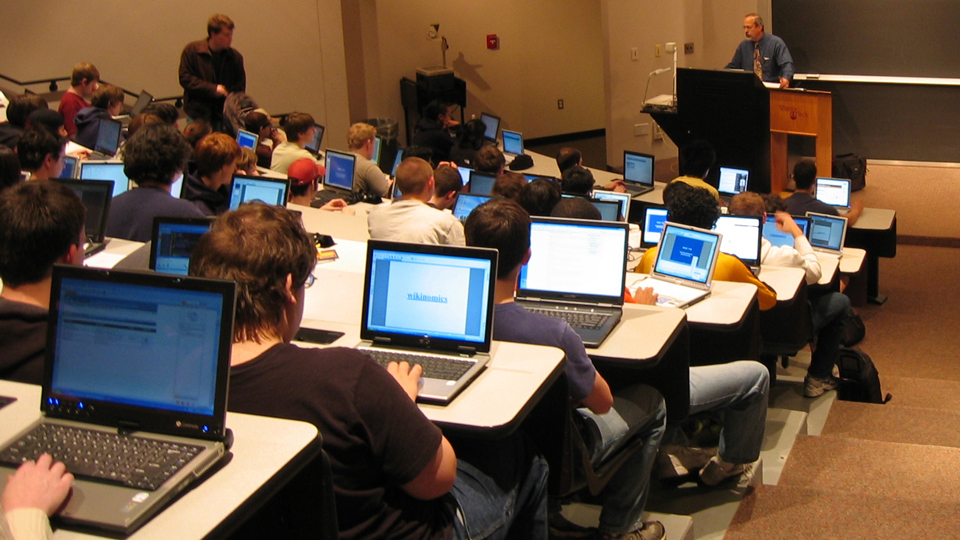An article published last year by University Affairs summarized a study on students’ preferences for spoken lectures over those presented to them through other technology. The study was conducted by Professor Vivek Venkatesh, the associate dean of academic programs and development in the School of Graduate Studies at Concordia University, and Professor Magda Fusaro of the Department of Management and Technology at Université du Québec à Montréal.
The researchers sent their survey to over a dozen universities and collected responses from over 15,000 students and 2,500 instructors. Venkatesh and Fusaro concluded that not every professor is in agreement about how a class should be taught.
“Our analysis showed that teachers think that their students feel more positive about their classroom learning experience if there are more interactive, discussion-oriented activities,” they wrote. “In reality, engaging and stimulating lectures, regardless of how technologies are used, are what really predict students’ appreciation of a given university course.”
One of the main reasons the study was conducted in the first place was that there seems to be a grey area between what the professors think their students want in lecture versus what the students actually prefer, according to Fusaro.
UTM students fall on both sides of the fence with this debate as well, appreciating different kinds of teaching methods in different classes.
Melissa Cordell, a second-year economics student, said that in her geography elective, there were more videos and room for interaction than in her economics courses. In geography, students were shown videos pertaining to the course material but were also lectured from slides, while her economics lectures tend to consist of a few PowerPoint slides and the professor talking for the duration of the class.
Cordell says she enjoys the interactive sessions a bit more since they allow for more personal opinions and class discussions. Ultimately, though, she said, a good balance is optimal.
Scott Becket, a third-year life sciences student, stated that his biology classes are mainly lecture-based and don’t involve many class discussions or visual aids. But Becket says he in fact prefers a good lecture over one that only involves class interaction and participation.
The opinions of these students are similar to those that inspired Venkastesh to conduct the study in the first place. “Students are old-school—they want lectures. They want to listen to a professor who’s engaging, who’s intellectually stimulating, and who delivers the content to them,” he says.
Interestingly, the researchers found that while 86% of professors embrace or approve using technology to deliver lectures, only 53% of students want to see it used in their classes.
Professor Carla, the professor who taught my organization design course, believes class interaction and YouTube videos play an effective complementary role in delivering the material alongside the lecture slides; while she focuses on her lecture slides, Carla also wants the class to participate since she believes that helps us understand various perspectives and the content itself.
She added that the lecture slides she prepared played a crucial role and that we were to focus on them as well as the discussions, videos, and other visual pieces, which she adds to sum up or amalgamate the key ideas of the lecture.
Education News quoted Fusaro’s explanation of what these results will mean for the classroom. “There has been a lot of chatter in the education-related media that with the popularity of online learning and blended learning on the upswing, we could be seeing the decline of the traditional college lecture,” she says. “Such thoughts might be a tad premature.”



